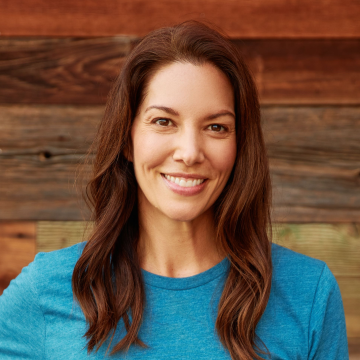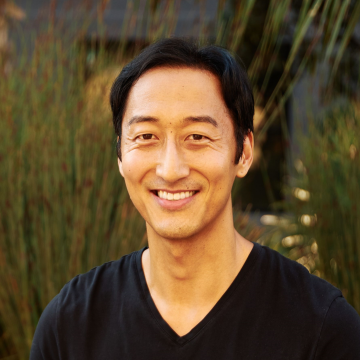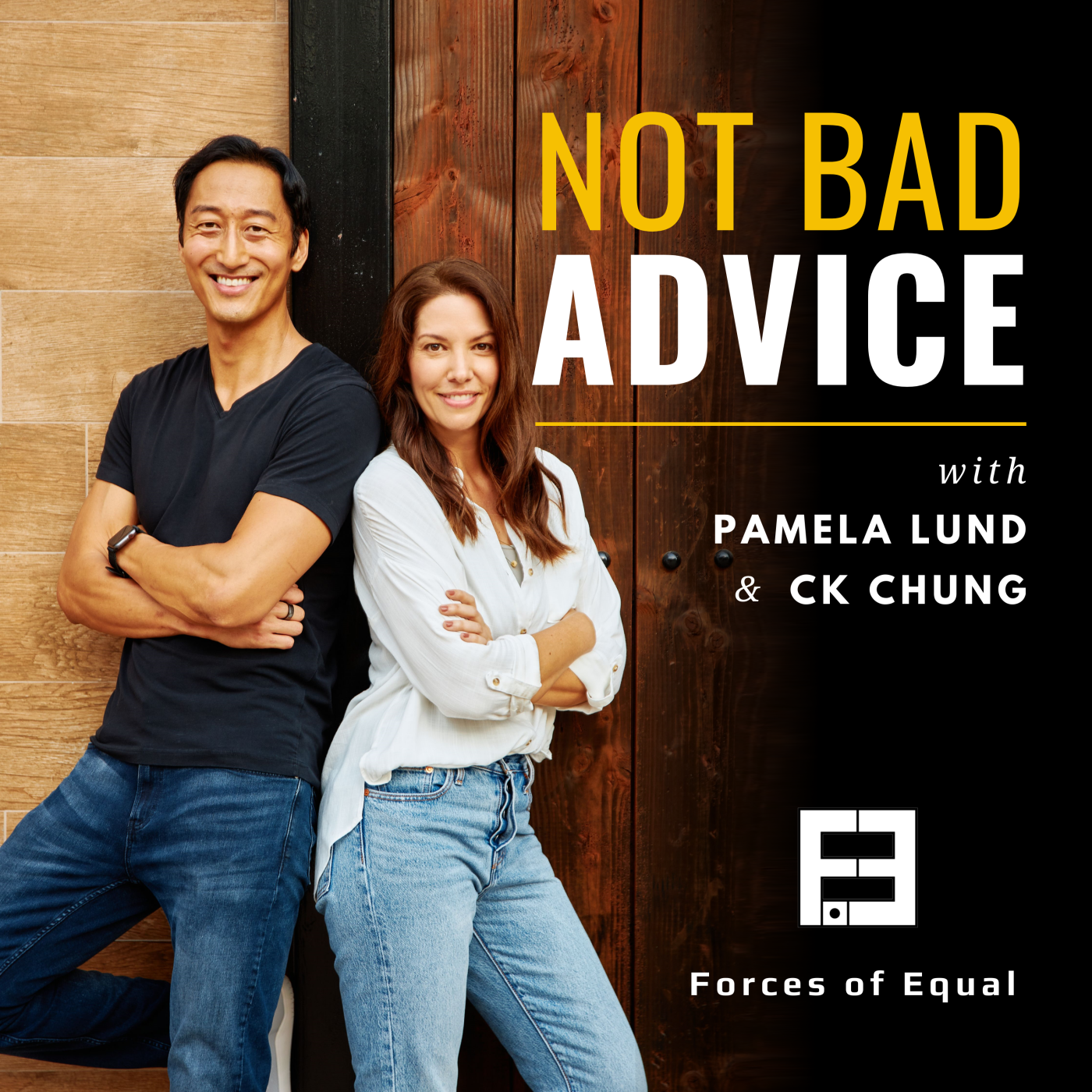Feelings are like the flag people in construction zones. They’re there to get you to pay attention to what’s happening and adjust your speed accordingly. They don’t get in the car and drive for you. Learn how to drive your emotional car.
Need advice about something? Ask us here: https://forcesofequal.com/advice/
Transcript
Pam: [00:06] You’re listening to Not Bad Advice where our goal is to offer perspective that helps you improve one aspect of your life at a time.
[00:12] I’m Pamela Lund.
CK: [00:20] And I’m CK Chung.
Pam: [00:21] And we hope that after listening, you’ll think, “hey, that’s not bad advice!”
[00:28] One of the most beneficial things you can do just in general in life is to get curious about yourself. We spend a lot of time judging and criticizing ourselves, but we don’t spend enough time neutrally observing how we think and feel and why we think and feel those ways.
[00:55] We trust that what we think is true, and that we have to feel the feelings that come up. But most of our thoughts and feelings that come with them are total BS. I’m not saying that your feelings aren’t real, they absolutely are. But they aren’t necessarily the truth.
[01:14] The truth is what’s behind the feeling – what’s underneath the surface of the feeling. And when you know the truth, you can feel less of what’s holding you back and more of what’s helping you move forward.
[01:27] Emotions seem like things that happen to us. Like we don’t have any agency in how we feel. That we just have to feel whatever comes up for us. Some people get totally taken away by every emotion they have and others try to avoid feelings altogether. Some people do both.
[01:47] We end up in this cycle of feeling everything, then wanting to feel nothing. We bounce back and forth between feeling too much and trying to numb.
[01:57] We spend our days feeling stressed, mad, annoyed, frustrated, feeling inferior, like you’re failing or falling behind, being worried about money… The list of things you could feel in just a few hours on any given day is tiring just to list, much less to actually feel. So by the end of the day, or maybe by the weekend, you’re just done. You don’t have the energy for anything and you don’t want to feel anything else. So, you numb.
[02:27] Some people drink, some people overeat, some people zone out in front of the TV, you just check out and do whatever makes you not feel the stuff that you felt all day.
[02:38] You’re probably not even conscious that this is happening. You probably have a routine or habits that you do every evening and every weekend without even thinking about it. I know I used to stop working, order takeout, turn on the TV every evening, and then I’d just be there on the couch for hours until I fell asleep or went to bed. And on the weekends that evening routine would spread out over two days until I had to go back to work Monday morning.
[03:03] It didn’t feel good, but I also didn’t feel anxious or stressed out. I just didn’t feel anything. But not feeling anything doesn’t make you feel better, and it doesn’t make the stress and anxiety go away. It just delays it for awhile.
[03:20] And look, sometimes that’s what you need. Sometimes, you need to just not feel anything for a bit. But when numbing out is habitual, and you have to do it to get away from feeling all the things, that’s when you need to rethink what you’re doing.
[03:36] So, like I said, we think emotions are things that happen to us and that they are us. If you feel something, it’s part of you. You are feeling it, so it must be. Right?
[03:48] Well, what if it’s not? What if a feeling is a suggestion or an invitation to change something?
[03:56] Feelings are kind of like the flag people in construction zones. They’re there to get you to pay attention to what’s happening, and adjust your speed accordingly. They don’t get in the car and drive for you.
[04:10] But we don’t think about our emotions like this – like they are separate from us – because we’re never taught to. Unless you go to therapy or are lucky enough to have someone else come into your life who teaches you this concept, you’ll stay in this cycle of feeling everything and then wanting to feel nothing.
[04:27] So how do you get out of that cycle? Well, first as always is awareness.
[04:33] When you notice you’re having a strong feeling. Observe what you’re feeling and be curious about it. Ask yourself, “why am I feeling this way?” And you’ll get a surface answer first. You know, maybe you’ll say, “I’m feeling mad because my kids are annoying me.”
[04:49] And that might be true, but why are you reacting this way now, when your kids are acting the way they always act, and it doesn’t usually annoy you? What else is going on? Go deeper. What’s under the surface feeling of being annoyed and mad?
[05:05] Acknowledge the feeling underneath. Maybe underneath, you find that the truth is, “I’m feeling grumpy and short-tempered because my kids are annoying me right now because I’m tired of being the only one taking care of them.”
[05:18] So the feelings underneath are overwhelm or maybe feeling unappreciated. Your kids probably often do exactly what they’re doing that’s annoying you, but this time, because you’ve got these other things going on, you’re feeling anger. Tired hungry, overwhelmed, anxiety over not being used to being stuck at home so much, uncertainty about the future, lack of control, feeling hopeless…
[05:40] These are all things that will manifest in strong feelings about whatever else is in your immediate purview, because you may not be able to do anything about the deeper issue. So, you try to exert control over the immediate one. But simply bringing awareness to the thing you’re feeling and what’s causing it can help it dissipate enough that you can react with a calmer state of mind.
[06:05] The goal isn’t to stop feeling things or to stop having strong emotions. That’s what numbing is. The goal is to have agency in how you’re feeling and to be curious about your feelings so you can start dealing with the underlying issues: why you feel the way you do, what your triggers are, what fears you haven’t processed, what inner child stuff you’ve got going on, baggage…
[06:27] Whatever you want to call it. We all have it, and most of our strong feelings are related to it. So once you’re consciously aware of what you’re feeling and the real “why” behind it, just take a pause so you can decide how to handle that feeling.
[06:46] The idea – that we talk about a lot – of creating space between your thoughts and actions is key in not making a bad mood worse by doing something you regret or spiraling into a darker place. Take a second here to ask yourself if what you’re reacting to or what you’re feeling is real.
CK: [07:06] The thing is, when it comes to feelings and emotions, is that it’s more of a lower level primitive effect just above stimulus and response. So, in terms of an evolutionary basis, this is more of a reactionary system and it’s useful for us humans because it gives us information according to patterns and thoughts and feelings that we’ve observed and felt before.
[07:40] And so our visceral system recognizes this type of stimulus or feeling and immediately responds with an emotional reaction. We’ve evolved as humans to levels past that, where we can create the space, like you said, and separate the reaction from reason and try to determine why we may be reacting that way or why we may be feeling that way.
[08:12] Because a lot of times when it comes to emotions, those feelings get stamped with our past thoughts and feelings. And when we encounter similar situations, our brains just revert to those past thoughts and feelings, regardless of how similar the present situation is.
[08:31] And so there’s less reasoning going on. And there’s just a continual cycle of these previous feelings and emotions going on. So, that’s how you can get into a certain pattern of behavior and habits and routines without even knowing or being aware of it. And then, in turn, spiral into more negative circumstances or situations. So it’s beneficial to be aware and mindful and be able to create that space and utilize our evolved brains to consider what’s actually going on instead of reverting to past feelings and past cycles.
Pam: [09:15] Yeah, that’s the hardest part for most people. I know it is for me, because when you’re feeling something, it feels so real, and you can’t see how it couldn’t be.
[09:25] Byron Katie teaches the concept of asking, “is it true?” Basically, when you get upset about something, ask yourself, “is what I’m upset about really what I think it is, or am I making assumptions about what’s happening? Am I creating a story about what’s happening, and that’s what I’m really upset about?”
[09:45] Sometimes just realizing that what you’re upset about. Isn’t what you think it is can help you out of that feeling.
[09:54] Next, you want to take ownership of the situation. Ask what you need to do to feel the way you want to feel. What can you do about the underlying cause you identified in the awareness stage?
[10:07] “Can I stop fueling my anxiety with social media? Can I ask my partner or a friend to entertain the kids for a while so I can get a break. Can I find ways to be productive that feel good? Can I take a nap? Can I step away from this email and not escalate the situation? Can I listen to a podcast that gives me a new perspective?”
[10:27] Maybe doing nothing is what you need, but make sure that’s a choice and that you’re conscious about making it. Is watching an hour of TV gonna help? Maybe. Is watching four hours of TV gonna help? Probably not.
[10:41] Sometimes doing something you know you can succeed at will help you get out of a bad mood or a negative thought spiral too. Do the dishes, take a walk, or a bike ride around the block. Do anything that has a definite finish that you know you can do. Accomplishing it will help you feel more present and in control.
[10:59] And keep checking in with yourself until it becomes a habit. “How am I feeling? Why am I feeling this? What’s behind it? Do I want to feel this way? What can I do about it?”
[11:09] Being active in choosing the thoughts and emotions that you engage with allows you to create space for more of what you want to think and feel. Remember that everything you think is a suggestion, and it’s based on assumptions and biases, and that you have the power to decide if they are thoughts you believe or not.
[11:31] Which leads us to the last tip: be curious about yourself. I often think, “Oh, that’s weird. I wonder why I thought that?” Or, “Huh, I wonder why I reacted that way?”
[11:41] And one of the biggest mindset shifts like this for me, relates to body image. I have a tendency to be overly critical of my own appearance and my body. And being curious about where those thoughts come from has allowed me to let go of a lot of the criticisms.
[11:58] So now when I start to think negatively about my appearance, like judging my cellulite or wrinkles, I question the validity of the criticisms because I recognize that they aren’t actually coming from me. They are rooted in societal expectations of beauty. And I don’t want to impose those expectations on anyone else, so I try not to impose them on myself anymore, either. Recognizing that allows me to let the criticisms go pretty easily now. After years of practice, of course.
[12:28] It’s not like flipping a switch, though it can be. But most likely it will take practice to retrain how you engage with your thoughts and emotions. But when you create space with curiosity, between your feelings and you, you can start to feel like emotions are more like floating in calm water and less like being hit by crashing waves. So we’re going to change up the card reading portion of the show today and feature a tarot card instead of an oracle card
[13:38] I’ve been using oracle cards because they’re really accessible. The imagery and meanings are easy for anyone to understand, without any knowledge of how to use the cards. Whereas tarot can be a little intimidating. I know it was for me,
[13:50] But the two of swords card is the perfect card for today’s message. So that’s what we’re going to use today.
[13:57] In tarot, twos represent finding balance, accepting duality, and recalibrating before you act. And swords represent your mind and thoughts and choosing how you’ll use your power.
[14:11] The traditional imagery of this card shows a blindfolded person holding a sword in each hand, representing someone with two options to choose from using only what she knows, not what she may see externally to make the decision. So the two of swords invites us to look inside and choose how we want to proceed when strong feelings come up.
[14:33] Do you want to attack with one sword or the other? Or, do you want to set both swords down? You’ve been put in a situation, but you have the power to choose how to react and what feelings you choose to give power to.
[14:51] If you found yourself thinking, “hey, that’s not bad advice” while listening today, giving us a good rating or review wherever you get your podcasts is a quick, easy, and free way to show your support.
[15:01] You can get in touch with us on Twitter, where I’m @Pamela_Lund and CK is @cKdisco.
[15:07] And if there’s something you need advice about, visit ForcesOfEqual.com/Advice to send us your question, and we may feature it on the show.






